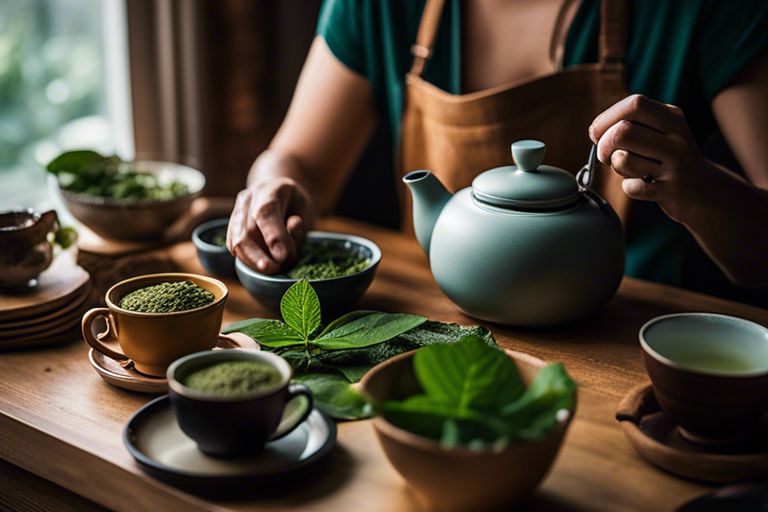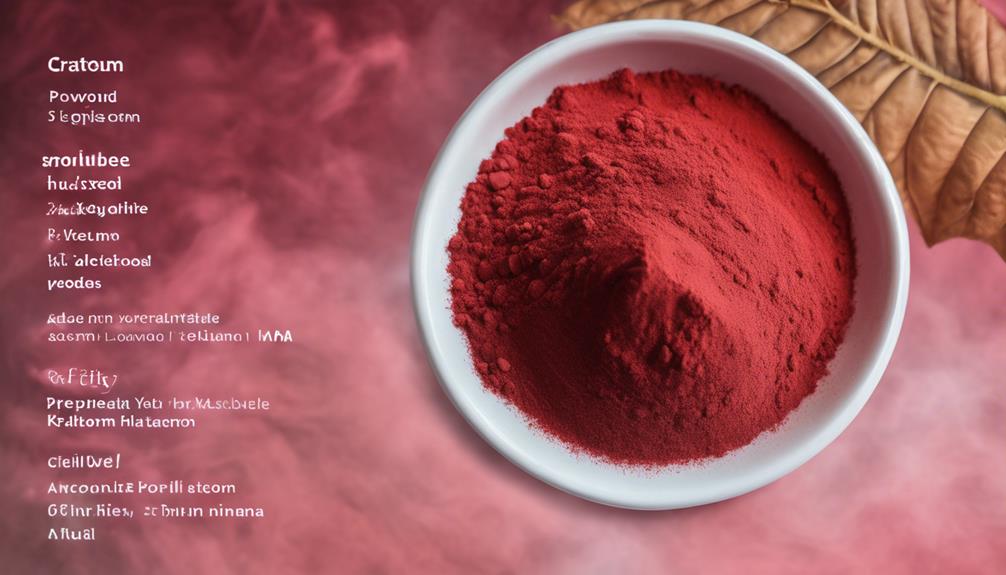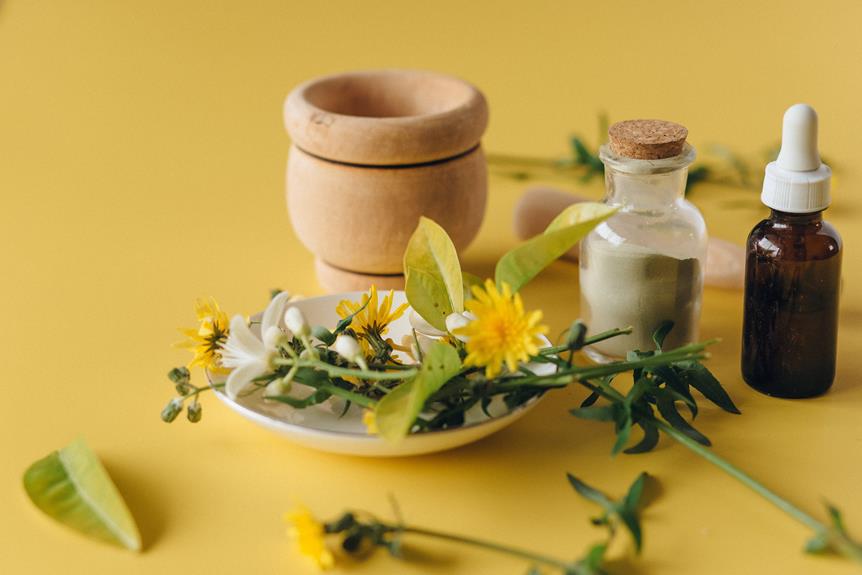In a world filled with stress and anxiety, individuals are constantly seeking alternative solutions to alleviate their mental health struggles. One such solution that has gained attention in recent years is kratom, a plant native to Southeast Asia known for its unique relaxing and calming properties. But is kratom truly a panacea for anxiety and stress? In this blog post, we will delve into the unique abilities of kratom in addressing these mental health issues, and explore the potential benefits and risks associated with its use. By the end of this article, you will gain a comprehensive understanding of kratom and its potential role in managing anxiety and stress.
Key Takeaways:
- Kratom has potential as a natural remedy: Research suggests that kratom may have relaxing effects that can help alleviate anxiety and stress, making it an alternative option to pharmaceutical medications.
- Varied effects on individuals: Kratom’s impact on anxiety and stress can vary from person to person, with some experiencing significant relief while others may not find it effective.
- Possible risks and side effects: While kratom may offer relaxation benefits, there are potential risks and side effects to be aware of, including addiction and withdrawal symptoms, which should be considered before use.
- Regulatory concerns: The legal status of kratom varies by country and region, with some locations banning its sale or use due to concerns about its safety and potential for misuse. It is important to research local laws and regulations before considering kratom as a treatment for anxiety and stress.
- Best used under guidance: Individuals considering kratom use for anxiety and stress should consult with a healthcare professional to discuss the potential benefits, risks, and appropriate dosages for their specific needs.
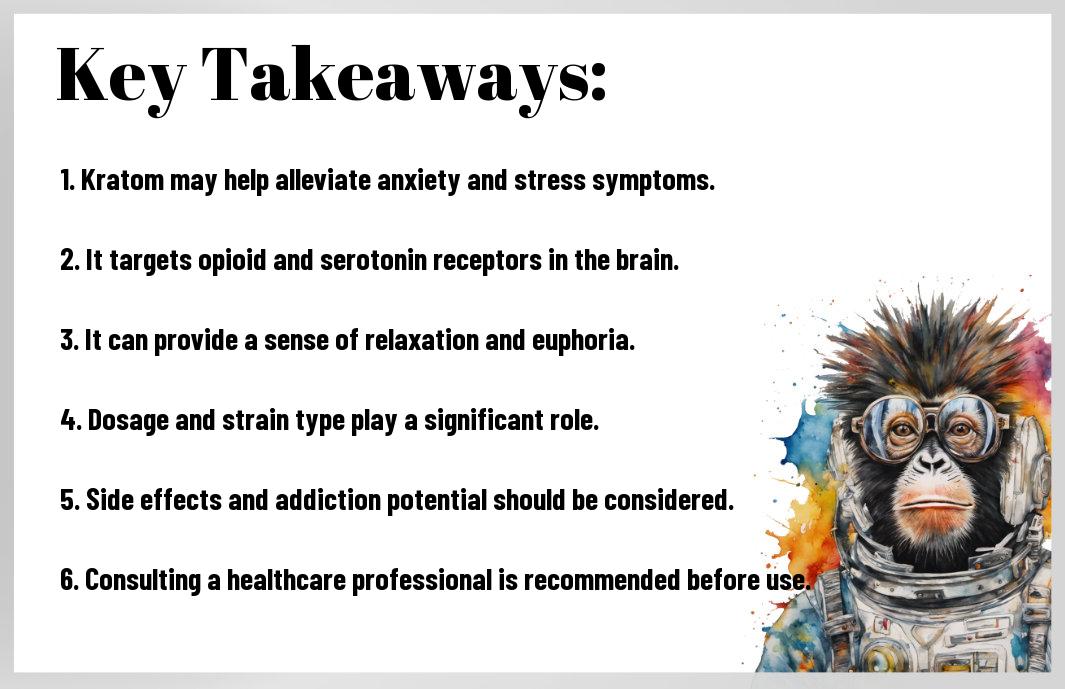
The Rise of Anxiety and Stress in Modern Society
Clearly, the fast-paced and competitive nature of modern society has led to a significant rise in anxiety and stress levels among individuals. The constant pressure to perform, meet deadlines, and juggle multiple responsibilities has taken a toll on the mental well-being of people worldwide. These factors, coupled with the prevalence of social media and the 24/7 digital connectedness, have created an environment where chronic stress and anxiety have become increasingly common.
Current Statistics and Trends
Stress and anxiety disorders are now the most common mental illnesses globally, affecting millions of people across all age groups. According to recent studies, nearly 40% of adults report feeling extremely stressed during their daily lives, with anxiety levels soaring even higher among young adults and teenagers. Furthermore, the current global health crisis has only exacerbated these issues, leading to a surge in psychological distress and mental health concerns.
The Quest for Alternative and Natural Remedies
Stress and anxiety sufferers are increasingly turning to alternative and natural remedies to manage their symptoms, seeking relief without the potential side effects associated with traditional medications. In this quest, herbs such as kratom have gained attention for their purported calming and relaxing properties. Many individuals are drawn to the idea of using natural substances to address their stress and anxiety, and kratom has emerged as a popular choice in this regard.
The herbal supplement market has witnessed a significant surge in demand for kratom products, with users seeking a natural solution to their stress and anxiety woes. The unique alkaloids present in kratom leaves are believed to interact with the body’s opioid receptors, potentially providing relief from symptoms of anxiety and promoting a sense of relaxation and well-being.
Kratom: A Brief History and Its Traditional Uses
Keep historically significant and traditionally used in Southeast Asia, kratom has gained popularity in the Western world as a natural remedy for various health issues, including anxiety and stress. Understanding this botanical substance’s history and traditional uses is essential to comprehend its unique relaxing abilities and potential benefits.
Origins and Historical Significance
An ancient plant native to the tropical regions of Southeast Asia, kratom has been used for centuries by indigenous communities for its stimulating and pain-relieving properties. It was traditionally consumed by chewing the fresh leaves or brewing them into tea during social gatherings and religious ceremonies. The plant’s historical significance is rooted in its cultural and spiritual importance, serving as a natural remedy for various ailments and as a symbol of hospitality and goodwill.
Traditional Uses in Southeast Asia
History reveals that kratom has been an integral part of Southeast Asian traditions, playing a crucial role in the daily lives of indigenous populations. Its traditional uses in the region include alleviating fatigue, enhancing productivity, and providing relief from discomfort. Historical accounts depict kratom as a natural and sustainable solution for managing physical and emotional stress, and as a means to promote overall well-being and relaxation.
Historically, kratom has been revered for its calming and mood-elevating effects, making it a potential remedy for anxiety, stress, and depression. Its traditional use as a natural relaxant in Southeast Asia has contributed to the growing interest in kratom as an alternative approach to mental wellness in modern times.
The Science Behind Kratom
Now, let’s delve into the scientific aspects of kratom and understand how it works its wonders in providing relief from anxiety and stress.
Active Components: Mitragynine and 7-hydroxymitragynine
Hydroxymitragynine and 7-hydroxy mitragynine are the two primary alkaloids found in kratom leaves that contribute to their unique properties. These alkaloids interact with the body’s opioid receptors, particularly the mu-opioid receptors, which are responsible for regulating pain perception and mood. This interaction is what gives kratom its potential to alleviate anxiety and stress, as well as provide a sense of relaxation and well-being.
Mitragynine and 7-hydroxymitragynine also exhibit partial agonist activity at the delta-opioid receptors, further contributing to their anxiolytic and anti-stress effects. These alkaloids have been the focus of numerous studies that have helped shed light on their pharmacological properties and their potential in managing psychological distress.
Mechanism of Action: How Kratom Affects the Brain
Components in kratom, particularly mitragynine and 7-hydroxymitragynine, act as modulators of neurotransmitter systems in the brain, including serotonin and dopamine pathways. This modulation plays a crucial role in regulating mood and emotional responses, which is why kratom has garnered attention for its potential as a natural alternative for managing anxiety and stress.
With its unique mechanism of action, kratom offers a natural and potentially effective solution for individuals seeking relief from anxiety and stress. Understanding the science behind kratom’s effects on the brain can provide valuable insights into its potential as a promising option for those looking to address these common psychological concerns.
Kratom’s Efficacy in Relieving Anxiety and Stress
Your search for natural remedies to alleviate anxiety and stress may have led you to kratom – a tropical evergreen tree native to Southeast Asia. Kratom, scientifically known as Mitragyna speciosa, has gained popularity in recent years for its potential to provide a sense of relaxation and calmness. But does it truly live up to the hype?
Analyzing the Research: What the Studies Say
What do scientific studies reveal about kratom’s ability to relieve anxiety and stress? Research suggests that certain compounds in kratom leaves, known as alkaloids, interact with opioid receptors in the brain, leading to a calming effect on the central nervous system. However, it’s important to note that the long-term effects of kratom use, especially in high doses, are still not fully understood. Some studies have even raised concerns about the potential for kratom to lead to dependence and addiction. While initial findings are promising, more rigorous research is needed to determine the safety and efficacy of kratom as an anxiety and stress-relieving agent.
Personal Testimonies: Success Stories and Cautionary Tales
Any individuals have reported experiencing relief from anxiety and stress after using kratom. Some people have shared success stories of how kratom has helped them manage their symptoms and improve their overall well-being. However, there are also cautionary tales cautioning about the potential for misuse and adverse effects, such as nausea, constipation, and irritability. It’s crucial to approach kratom use with caution and under the guidance of a healthcare professional to minimize the risk of negative outcomes.
It is imperative to consider both the positive and negative experiences shared by individuals when exploring the potential benefits and risks of using kratom for anxiety and stress management. Understanding the complexities of kratom’s effects can empower individuals to make informed decisions about its use while also highlighting the need for further research and regulation in this area.
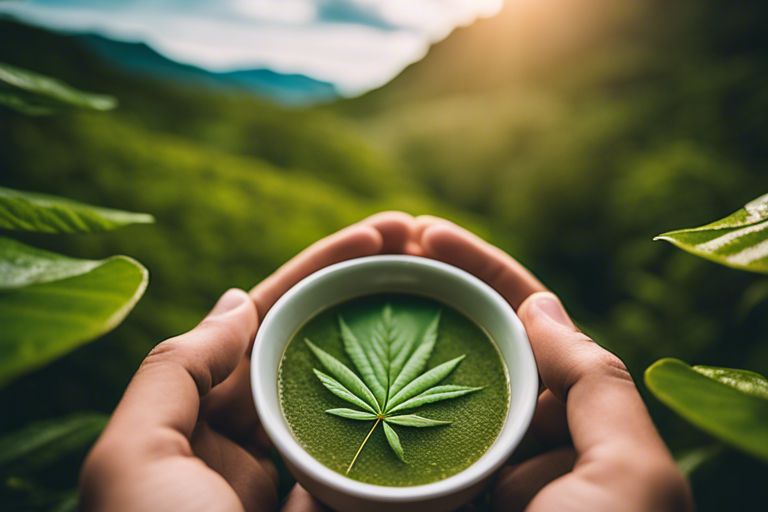
Potential Risks and Side Effects of Kratom Use
After exploring the relaxing abilities of Kratom, it is crucial to understand the potential risks and side effects associated with its use. While Kratom has gained popularity for its anxiolytic and stress-relieving properties, it is essential to recognize the controversies and regulatory stance surrounding its consumption.
Understanding the Controversy and Regulatory Stance
Regulatory agencies have raised concerns regarding the safety of Kratom due to the lack of standardized dosages and the potential for dependence. The U.S. Food and Drug Administration (FDA) has issued warnings about the risks of using Kratom, citing reports of adverse effects and even fatalities. Additionally, the Drug Enforcement Administration (DEA) has listed Kratom as a “Drug of Concern,” raising apprehensions about its potential for abuse and addiction. These regulatory stances reflect the ongoing debate surrounding Kratom and highlight the need for further research to establish clear guidelines for its use.
Known Side Effects and Reported Adverse Reactions
The known side effects of Kratom use include nausea, constipation, agitation, and potential respiratory depression. Furthermore, reported adverse reactions have involved seizures, hallucinations, and liver toxicity, raising significant concerns about its safety. The variability in product quality and potency further complicates the assessment of risks associated with Kratom consumption. It is crucial to acknowledge these potential adverse effects and approach Kratom use with caution.
Effects of Kratom may vary based on individual tolerance and sensitivity, emphasizing the need for responsible consumption and informed decision-making. It is imperative to stay informed about the latest research and regulatory updates to make educated choices regarding Kratom use.
Legal Status and Accessibility
For individuals seeking natural remedies for anxiety and stress, the legal status and accessibility of kratom are essential factors to consider. Kratom’s legal status varies by country, and regulations and restrictions can influence its availability.
A Country-by-Country Overview
Overview: The legal status of kratom varies significantly across different countries. In some nations, such as Thailand and Malaysia, kratom has a long history of traditional use and is legally available. However, in countries like Australia, Denmark, and Finland, kratom is classified as a controlled substance, making it illegal to buy, sell, or possess. The legal landscape surrounding kratom is constantly evolving, so it’s important for consumers to stay informed about the status of kratom in their respective countries.
The Ongoing Debate: Regulations and Restrictions
Accessibility: The accessibility of kratom is an ongoing subject of debate due to regulations and restrictions imposed by various governments. While some advocates argue for the medicinal benefits of kratom and support its legal availability, others raise concerns about its potential for abuse and addiction. As a result, the regulatory environment for kratom can be complex and contentious, influencing its accessibility for those seeking natural relief from anxiety and stress.
Status: The ongoing debate surrounding the regulations and restrictions on kratom reflects the conflicting perspectives on its potential benefits and risks. The status of kratom as a legal and accessible remedy for anxiety and stress is a topic of significant interest and concern for individuals who rely on its unique relaxing abilities.

How to Use Kratom for Anxiety and Stress Relief
To truly benefit from the relaxing abilities of kratom, it’s important to understand how to use it effectively for anxiety and stress relief. Whether you’re new to kratom or a seasoned user, finding the right strains, dosages, and consumption methods is essential for achieving the desired effects.
Strains and Dosages: Finding Your Sweet Spot
On the journey to using kratom for anxiety and stress relief, it’s crucial to experiment with different strains and dosages to find your sweet spot. Kratom strains vary in their effects, with some providing more energizing and uplifting effects while others lean towards relaxation and calmness. It’s recommended to start with a low kratom dosage and gradually increase it until you achieve the desired relief from anxiety and stress. Additionally, keeping a journal to track your experiences with different strains and dosages can be beneficial in finding the most effective solution for your needs.
Consumption Methods: Tea, Capsules, Powder, and More
Spotting the most suitable consumption method for your kratom intake can also contribute to its effectiveness in alleviating anxiety and stress. Kratom can be consumed in various forms, including tea, capsules, and powder. Each method offers its unique benefits, with some users preferring the convenience of capsules while others enjoy the ritual of brewing kratom tea. It’s important to note that the consumption method can also impact the onset and duration of kratom’s effects, so it’s advisable to explore different options to see which one works best for you.
To enhance the relaxing effects of kratom for anxiety and stress relief, it’s also worth considering strains such as Red Bali, Green Maeng Da, and White Borneo, which are known for their calming and soothing properties.
Can Kratom Help with Anxiety and Stress as Well as Mood and Mental Well-being?
Yes, kratom’s mood-boosting benefits have shown promise in helping with anxiety, stress, and overall mental well-being. Many users report feeling more relaxed and positive after using kratom, which can significantly impact mood and alleviate symptoms of anxiety and stress.
Can Kratom Really Provide Relief for Anxiety and Stress?
There is ongoing debate about clearing the air about kratom’s truths and its ability to provide relief for anxiety and stress. While some anecdotal evidence suggests its effectiveness, more scientific research is needed to fully understand its potential benefits and risks. It’s important to approach kratom with caution and seek professional advice.
Final Words
Drawing together the evidence presented, it is clear that while kratom may provide temporary relief for anxiety and stress, it is not a panacea for these conditions. The unique relaxing abilities of kratom may offer some individuals respite from symptoms, but it should not be considered a cure-all. As with any substance, there are risks of addiction and dependence with long-term use, making it crucial for individuals to seek professional help if they find themselves struggling with kratom addiction. Learn more about The Role of Rehabilitation in Kratom Addiction.
FAQ
Q: What is Kratom?
A: Kratom is a tropical tree native to Southeast Asia. Its leaves have been used for centuries for their various medicinal properties.
Q: Can Kratom help with anxiety and stress?
A: Kratom is believed to have relaxing and sedative effects, which may help alleviate symptoms of anxiety and stress. However, it is important to use it responsibly and in moderation.
Q: What are the active compounds in Kratom?
A: The main active compounds in Kratom are mitragynine and 7-hydroxymitragynine. These alkaloids are responsible for Kratom’s psychoactive effects and potential therapeutic properties.
Q: Are there any potential risks or side effects of using Kratom for anxiety and stress?
A: Yes, Kratom can have adverse effects such as nausea, dizziness, constipation, and in some cases, dependency and addiction. It’s essential to consult with a healthcare professional before using Kratom, especially if you have underlying health conditions or are taking medications.
Q: Is Kratom legal and safe to use for anxiety and stress relief?
A: The legal status of Kratom varies by country and region. It’s crucial to research and understand the local regulations before using Kratom. Additionally, the safety of Kratom use for anxiety and stress relief depends on responsible and informed consumption, as well as individual health considerations.




